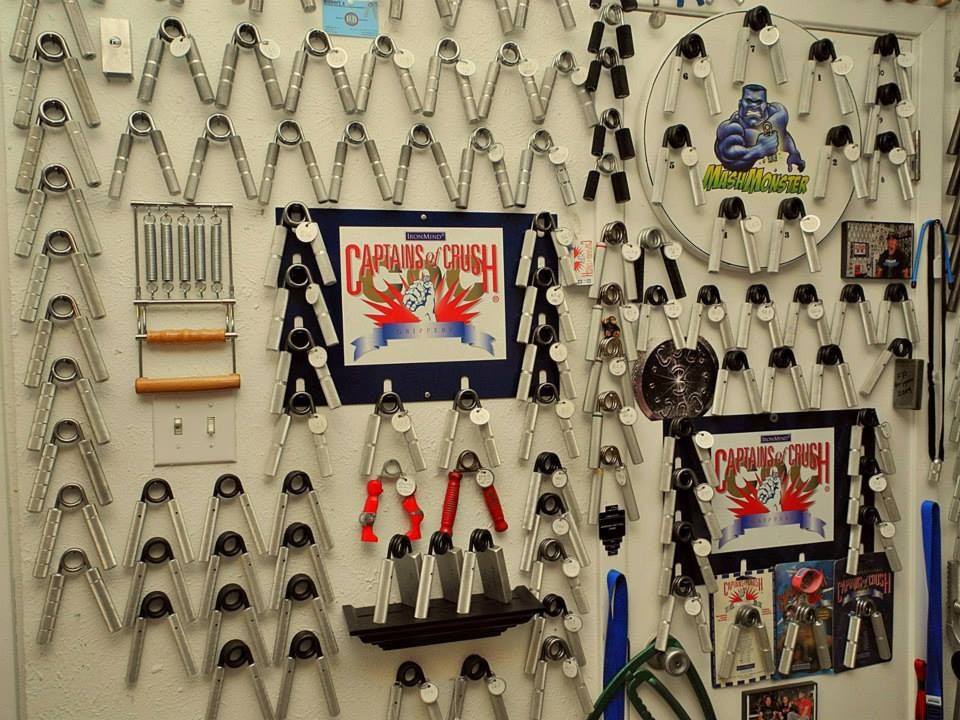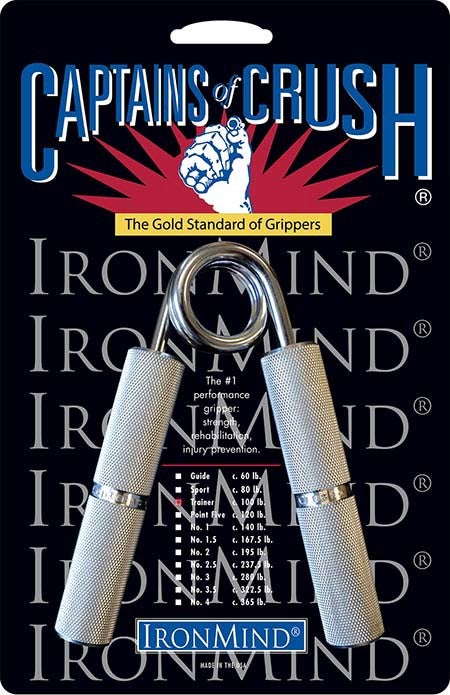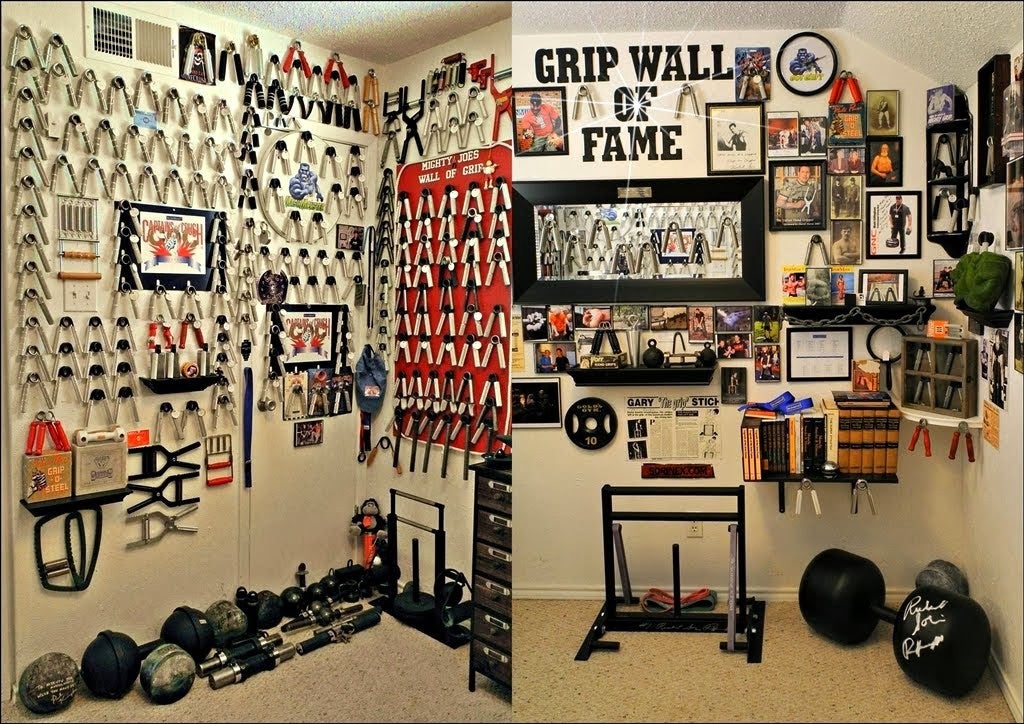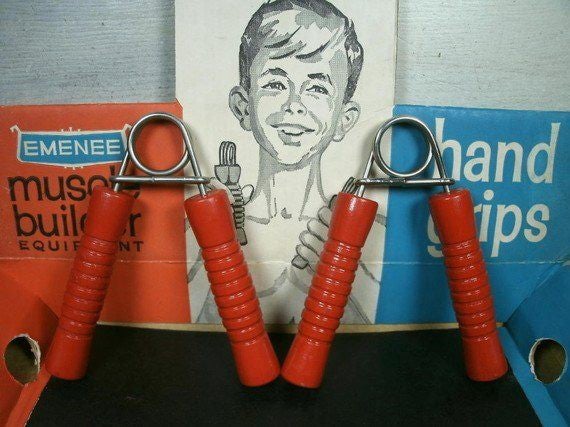Feel like you haven’t gotten a good handshake in years? It’s not you. Kids today can’t grip for shit. A study out of Winston-Salem State University found that men in their early 20s in 1985 could crush, on average, 121 pounds with their right hand, and 105 pounds with their left. Today? Men in that same age bracket can only squeeze out a paltry 101 with their right and 99 with their left. (For comparison’s sake, young women fell from 70 to 60 pounds.)
Declining grip strength might seem like a pretty minor problem for millennials, given the state of the world in 2016, but the researchers were interested in measuring that dramatic dip for two important reasons. First, these 1985 grip strength surveys are used as the basis for determining the severity of injuries in workers’ comp situations, and tracking patients’ recovery. If injured workers are being measured against the demigods of a golden era of grip strength, that might lead to inappropriate court findings and inappropriate medical treatment.
Second, grip strength has recently been found to function as a good stand-in for overall health. Last year, researchers found that grip strength was a better predictor of overall mortality than blood pressure, even when the cause of death was heart disease or stroke — if you can crush a handshake, it’s more likely that you can keep crushing life.

But why are we so much weaker than our fathers? Given the health implications of this epidemic of puny forearms and feeble hands, we decided to conduct some of our own research by going straight to the source: two men who have dedicated their lives to the production of spring-loaded grip-strength trainers.
Commonly known as “grippers,” those little v-shaped things used to be everywhere. Three of my co-workers recall their dads killing time in the early 90s by squeezing out some grip reps while stuck in traffic. Anecdotally, the relative absence of casual gripper grasping in the world today (what did our dads even do with those things?) might even support the Winston-Salem findings — once, men cared about grip strength enough to try and improve it. Now, we don’t.
But Randall Strossen, president of IronMind, the strength training equipment manufacturer behind the Captains of Crush line of heavy-duty grippers, says that he’s only seen his gripper business grow since it began in 1991. “More and more people are aware of grippers,” he says. “The internet has helped make everything more popular.”

Even before the supposed web spread the gripper, Strossen credits his own line with expanding the field. “Everyone had a mass market plastic thing that looked like what you’d get in a box of breakfast cereal, and people would mindlessly bang out hundreds of reps on those,” Strossen says, but the Captains were made with more durable aluminum handles, came in a range of precise grip resistances, and most importantly, came with a built-in challenge: after a certain level, they were almost impossible to squeeze shut.
Competitions featuring the Captains have popped up around the country over the past 25 years, garnering coverage in The Wall Street Journal, with 4-Hour Workweek’s Tim Ferriss coming out in favor of the grip trainers. The №3 Captains require 280 pounds of grip to entirely close, a feat that’s only been accomplished by 150 officially certified “stout-hearted grip masters.” The №4s, at 365 pounds of resistance, have only been conquered by five.
As proof of the grip world’s broad appeal and ongoing growth, Strossen cites the age range of the №3 hall of fame (which consists entirely of men, though three women have officially crushed №2 grippers).
“Most top feats of strength are done by people in their mid-20s to early 30s, but the youngest guy to certify on №3 was about 15, and the oldest I think right now is 57 — it’s such a broad spectrum.”

According to Joe Musselwhite, creator and curator of the Musselwhite Grip Museum, which he operates out of his home in Trinidad, Texas, “the popularity of hand grippers today, compared to say, the early 90s, is huge.”
Musselwhite, who also goes by “Mighty Joe,” has been collecting grippers since the late 80s — his museum currently holds 470 examples of grip training devices (making it the world’s largest private collection of hand grippers, as certified by Record Holders Republic) and he said his ultimate goal is to exhibit 1000 grippers and grip-related implements.
He credited a particular corner of the internet with the rise of grip culture: a grip forum called gripboard.com. Since the early 2000s, “elite grip athletes”, many of whom had already certified as №3-level Captains of Crush crushers, started an even more rigorous circuit of grip qualification called the Mash Monster Certification, which Musselwhite says “really spiked the interest in hand grippers and hand gripper training.”

As the hardcore grip community has surged in the digital age, Musselwhite admits that the nature of gripper enthusiasm has changed over the years. “Usage today is far different in one major aspect, and that’s the strength resistance of these grippers,” he said. A classic 1950s Moosehead Whitely gripper — thin-springed and wooden-handled, like the kind our dads had stashed in the glovebox in the 90s — only required 25–30 pounds of force to close.
But if grip strength training has only gotten more intense in the past few decades, why are millennial grippers so much weaker than the grippers of 1985?
“Probably because people don’t do manual labor anymore,” said Strossen. “People will come up to us and say, ‘my boyfriend has huge arms, he should probably start with Captains of Crush №3, right?’ Not at all. But if someone comes up and says, ‘I’ve been a bricklayer for the past 25 years,’ we take that very seriously.”
But even if Strossen’s right (and it does seem that fewer young men are entering the skilled trades that build up gargantuan grips) it might be a little hasty to conclude that millennial men are stick-limbed Olive Oyls compared to the Popeyes of the past. The Winston-Salem researchers had only 247 participants, all recruited from the local area — there’s a good chance all the millennials with pulverizing handshakes, whether bricklayers or gripper enthusiasts, were too busy crushing their various fields of endeavor to squeeze some reps for science.

Sam Dean is a staff writer for MEL.
